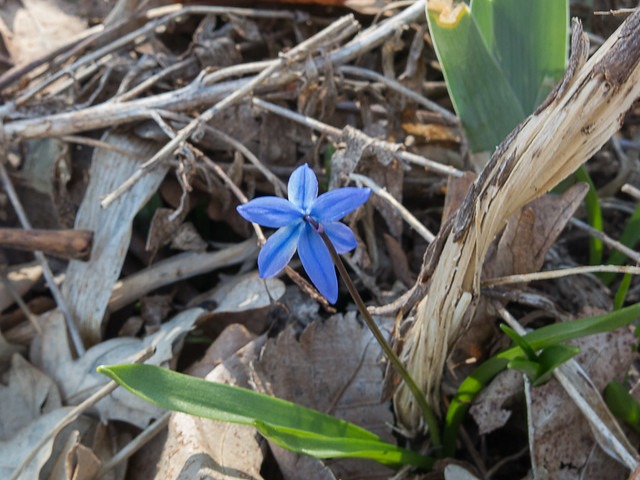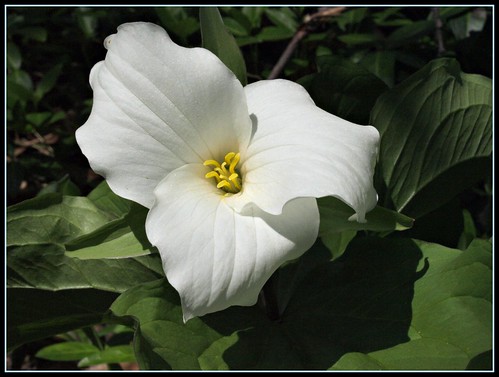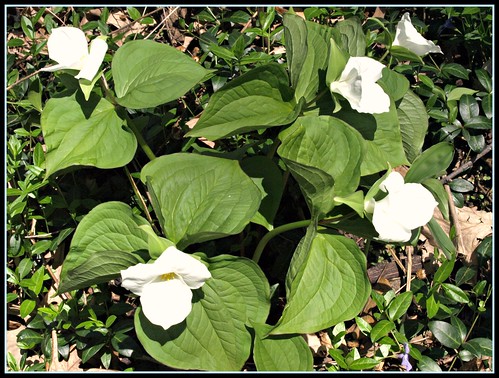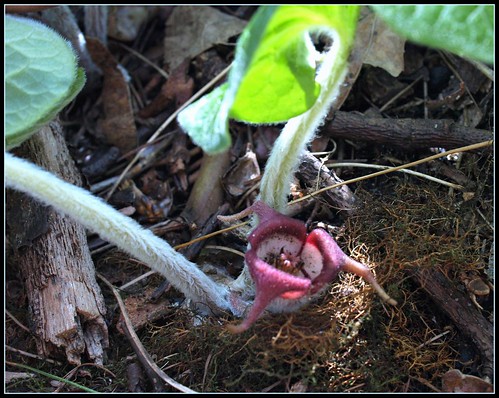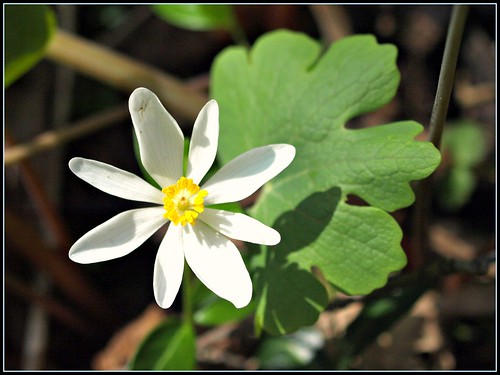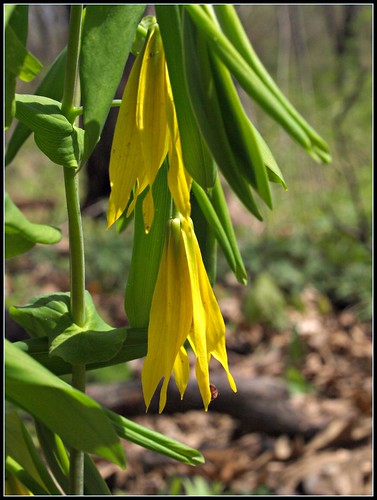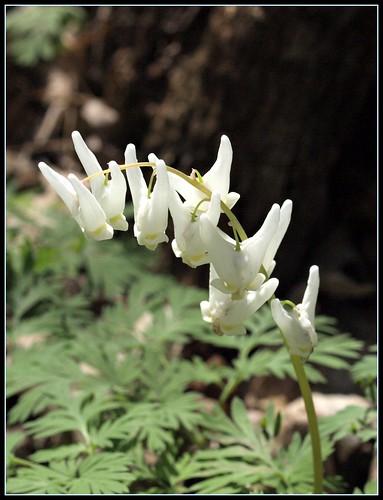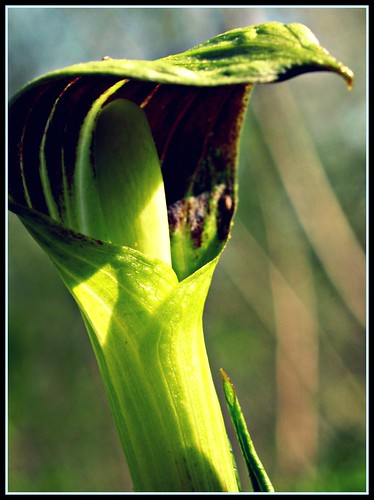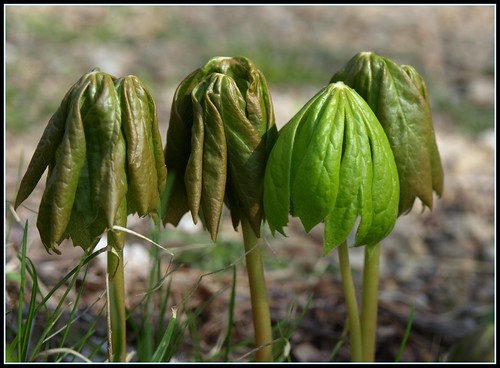A few weeks into Spring by the calendar and I’m seeing the first hints of green in the woodlands. The forest floor is greening and will soon be a mass of ferns, wildflowers and green ground cover. The early spring forest floor has a brief window of time for its glory. Once the tree canopy shades the ground and the sun no longer than filter through the skeletal branches, the wildflower show will diminish. But for now, we are at the beginning.
Amidst the leaf litter from last year, green plants and ferns break through the earth and poke above the leaves. I hiked several miles through woodland and admired the hints of green while looking for the first flower of spring (not counting the garden variety flowers nor a few flowering forsythia).
The wood squill (or Siberian squill) is one of the first of the spring-flowering bulbs to emerge in early spring. The flower has six “petals” (actually three petals and three sepals) and is less than an inch across. These deep blue flowers will last only few weeks. This was one of the several I saw, the earliest ones to emerge, but soon the scattered parts of the forest floor will be a sea of blue.


